We use cookies to make your experience better. To comply with the new e-Privacy directive, we need to ask for your consent to set the cookies. Learn more.
Monthly Archives: January 2023
-
25 JanLFOs are a part of most synthesizer keyboards and modular synths. This post will cover the details of what they are, what they do, and the different kinds of LFOs available.Read more »
-
25 JanPolyphony is becoming a popular topic in Eurorack circles. This blog article will cover how a system can be used to make polyphonic sounds, and some considerations for setting up a Eurorack modular for polyphony.Read more »
-
25 JanAmbient electronic music has its roots in the 1970s and the emergence of synthesizers. Now, nearly every modern ambient music composer has used modular synths. This article will provide some tips and inspiration for making ambient music on Eurorack systems.Read more »
-
25 JanModular synths are not the first thing that come to mind when thinking about jazz, but they have been used very innovatively in jazz over the years. This post will provide some ideas and inspiration for those wanting to use a modular synth for jazz music.Read more »
-
25 JanLogic modules can add a fascinating dimension of sequencing and control. They are especially suited to generative music composition. This blog post will cover how they work and what kinds of logic modules are available.Read more »
-
25 JanEver been fascinated by a composition that has rhythms that define categorization? It may have been a polyrhythm, which combines differing rhythms in an interesting way. This post is all about polyrhythms and how to make them on Eurorack modular synths.Read more »
-
25 JanRead more »
There are several ways to generate percussion sounds with Eurorack modules:
1. Drum modules: These modules are specifically designed to create drum sounds and typically include various sound engines, such as sample-based, synthesis-based, and physical modeling. They can also have built-in sequencers and triggers for creating complex rhythms.
2. Sampler modules: These modules allow you to load samples of your drum sounds and manipulate them in various ways, such as pitch-shifting, time-stretching, and granular synthesis.
3. Digital synthesis-based modules: These modules use various techniques, such as FM, wavetable, or granular synthesis, to create unique and complex drum sounds.
4. Noise generators: These modules can generate white, pink, or other types of noise, which can then be processed and shaped into percussion sounds.Classic percussion sounds like the 808 and 909 can be re-created by using drum modules that are clones of the circuits in these classic drum machines. Additionally,
-
25 JanRead more »
Synthesizer voice Eurorack modules contain all the necessary components to create a complete synthesizer voice, such as oscillators, filters, and envelopes. In addition, these modules can be connected to other Eurorack modules to create a more complex patch or used by themselves as a complete voice.
Synth voice modules create and shape audio signals through various electronic components, such as oscillators, filters, and envelopes. The oscillators create the basic audio waveforms, such as sine, sawtooth, and square waves, which are then processed by filters and envelopes within one module to shape the sound. The circuits chosen are sometimes from a specific vintage synthesizer, allowing a classic's original sound and personality to reside in the Eurorack system.
One advantage of buying a synthesizer voice Eurorack module is that it is a compact and all-in-one solution for creating a complete synthesizer voice. This can save space and simplify the process of building a modular synthesizer.
-
25 JanRead more »
A quantizer is a module that maps a continuous or analog signal to a stepped signal, like the notes on a keyboard. Essentially, it takes a continuous range of values and divides it into a finite number of discrete levels or "bins." Each bin represents a specific range of values, and any input within that range will be mapped to the same output value. This process is called quantization, and the output of a quantizer is a quantized signal.
The quantizer divides the input signal into predefined intervals or "steps," and then maps the input signal to the closest step in the set. For example, a pitch quantizer may divide the pitch range into semitones and map any incoming pitch to the nearest semitone. This ensures that the output pitch will always be a particular, in-tune note rather than a slightly out-of-tune pitch that may occur with an unquantized input signal.
Some Eurorack modules also allow for different quantization modes, such as chromatic, where all notes are quantized to the nearest
-
25 JanRead more »
A Voltage Controlled Amplifier (VCA) in a modular synthesizer is used to control the amplitude, or loudness, of an audio signal. It works by accepting a control voltage (CV) input, which is used to control the gain (amplification) of the audio signal. The output of the VCA is the amplified audio signal.
Linear and logarithmic responses refer to the way in which the VCA responds to the control voltage. A linear response means that the gain of the audio signal increases or decreases at a constant rate as the control voltage increases or decreases. A logarithmic response means that the gain of the audio signal increases or decreases at a non-constant rate as the control voltage increases or decreases. Logarithmic responses are often used in VCAs because they mimic the way the human ear perceives loudness changes.
Several types of VCAs can be used in a modular synthesizer, each with its own unique features and characteristics. Here are the main types of VCAs in order of their historical appearance:
